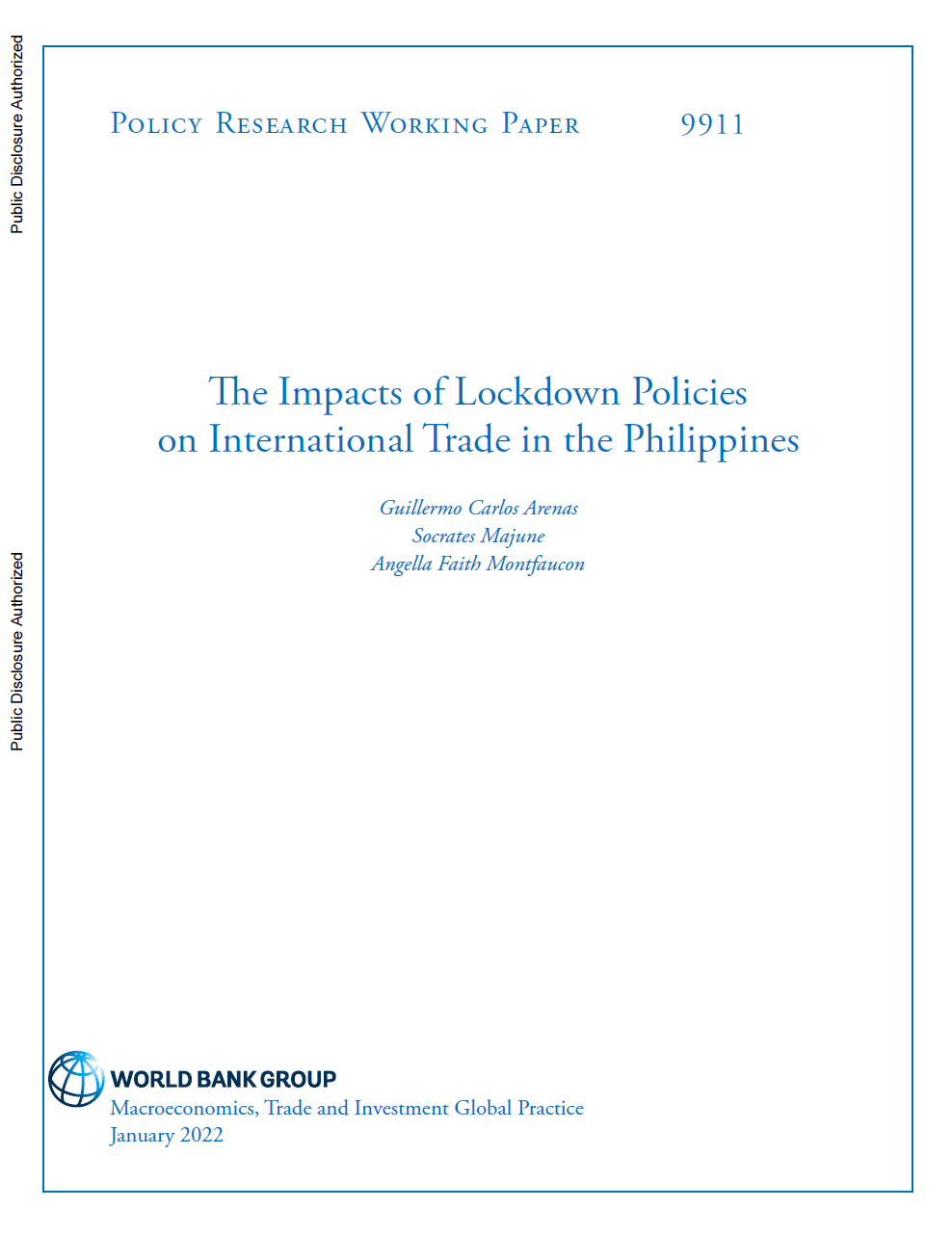世界银行《封锁政策对菲律宾国际贸易的影响》
发布时间:2025-09-07
浏览次数:72
The Philippines was among the most infected countries in East Asia at the onset of the COVID-19 outbreak. This study analyzes how international trade on various margins was affected by the country’s ···
The Philippines was among the most infected countries in East Asia at the onset of the COVID-19 outbreak. This study analyzes how international trade on various margins was affected by the country’s own lockdown policies and those of trading partners. Using a monthly series of product-by-country data for the period from January 2019 to December 2020 and an event study design, the paper shows that domestic lockdown measures did not affect international trade but external lockdowns affected both ex- ports and imports. The introduction of lockdown measures by trading partners affected imports more than exports, leading to 7 and 56 percent monthly average drops in export and import values, respectively. Restrictions on internal movements and international travel controls in partner countries were responsible for the drop in exports. The slump in imports was because of workplace closure, stay-at-home requirements, restrictions on internal movement, and international travel controls by trading partners of the Philip- pines. Intermediate goods were the key driver of the drop in imports following foreign lockdowns, reflecting supply disruptions in backward global value chain participation. At the same time, exports of intermediate goods were more resilient to the lockdown policies. Finally, both exports and imports were more affected at the extensive margin than the intensive margin, as lockdown measures hindered interactions among people, in turn reducing the potential of businesses to create new relationships and launch new products in foreign markets. Overall, diversified and geographically dispersed suppliers can help countries adjust better to future disruptions.
菲律宾在新冠疫情初期曾是东亚地区感染率最高的国家之一。本研究分析了该国自身及贸易伙伴实施的封锁政策如何影响多边国际贸易。通过采用2019年1月至2020年12月期间按国家和产品分类的月度数据序列,并运用事件研究法,本文发现:国内封锁措施未对国际贸易产生显著影响,而外部封锁措施则同时冲击了进出口贸易。贸易伙伴实施的封锁措施对进口的影响远超出口,导致月均出口值和进口值分别下降7%和56%。伙伴国的国内流动限制与国际旅行管制是造成出口下降的主因;而进口暴跌则源于菲律宾贸易伙伴实施的工作场所关闭、居家要求、国内流动限制及国际旅行管控。中间产品是外部封锁导致进口下滑的关键驱动因素,这反映出后向全球价值链参与的供应中断。与此同时,中间产品的出口对封锁政策展现出更强韧性。最后,封锁措施通过阻碍人际互动,使广延边际上的进出口贸易受影响程度均大于集约边际,从而降低了企业在国外市场建立新关系和推出新产品的潜力。总体而言,供应商的多样化和地域分散性有助于各国更好地应对未来的干扰。https://openknowledge.worldbank.org/entities/publication/3fca1b42-0f6e-5e37-9685-48831fd63444




















